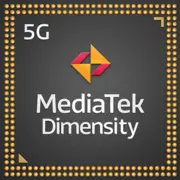MediaTek MT6737

MediaTek MT6737: Budget Processor for Basic Tasks in 2025
(Relevant as of April 2025)
Introduction
In an era where smartphones are becoming increasingly powerful and technologies like AI and 5G have become standards, the MediaTek MT6737 serves as a reminder that the budget segment is still alive. This processor, released back in 2016, continues to be used in the most affordable devices. But how relevant is it in 2025? Let's take a closer look.
1. Architecture and Manufacturing Process: The Foundation of It All
Cores and Frequencies
The MT6737 is built on four ARM Cortex-A53 cores with a frequency of up to 1.3 GHz. This is a classic configuration for budget chips from the mid-2010s: all cores are identical (without division into "big" and "small"), which simplifies power management but limits performance in resource-intensive tasks.
28nm Manufacturing Process
The 28nm manufacturing technology is a significant drawback. By 2025, even budget chips have transitioned to 12-16nm, which provides better energy consumption and less heat generation. The MT6737 has a high TDP (7W) heat dissipation level for its category, which can lead to throttling under prolonged loads.
Mali-T720 MP2 GPU
The Mali-T720 MP2 graphics accelerator with two compute cores supports a resolution of up to 720p and basic APIs like OpenGL ES 3.1. Its capabilities are insufficient for games in 2025, but it is adequate for the Android Go interface and simple applications.
2. Performance in Real-World Tasks
Gaming
The MT6737 can only handle lightweight projects:
- 2D Games (Candy Crush, Subway Surfers) — consistently runs at medium settings.
- 3D Games from 2015-2018 (Asphalt 8, Minecraft) — runs at minimal settings and with frame drops.
- Modern games like Genshin Impact or Call of Duty: Mobile won't even launch.
Multimedia
- Video: Supports 1080p@30fps decoding (H.264). Sufficient for watching HD videos on YouTube, but 4K or HDR streaming is impossible.
- Audio: Lacks advanced codecs like LDAC or aptX HD — only basic SBC via Bluetooth.
AI Applications
There are no specialized neural accelerators in the chip. Even simple tasks like face recognition or photo processing are performed slowly (for instance, Google Lens can take 2-3 seconds to respond).
Energy Consumption and Heating
With a TDP of 7W and an outdated manufacturing process, smartphones with the MT6737 rarely last more than 4-5 hours of active use. Charging a 3000-4000mAh battery takes up to 3 hours due to support for only 5-10W.
3. Integrated Modules: Connectivity and Communication
- Modem: Supports 4G LTE Cat.4 (maximum speed of up to 150 Mbps). No 5G, VoLTE, or Wi-Fi 6.
- Wi-Fi: Only 802.11n (2.4 GHz) — slower and less stable than modern standards.
- Bluetooth: Version 4.0 without support for Dual Audio or fast pairing.
- Navigation: GPS and A-GPS. Lacks GLONASS, Galileo, or BeiDou.
4. Comparison with Competitors
Analogs from 2016-2018:
- Qualcomm Snapdragon 425: Similar scores in Geekbench 6 (Single-Core ~130), but better optimization for gaming.
- Unisoc SC9832: More modern 28nm chip with support for cameras up to 13 MP compared to 8 MP for the MT6737.
Current Budget Chips (2025):
- MediaTek Helio G25 (12nm, 8 Cortex-A53 cores): AnTuTu 10 — 95,000, supports Full HD+ screens.
- Qualcomm Snapdragon 480+ (8nm, 5G): AnTuTu 10 — 220,000, smartphone prices starting from $150.
Conclusion: The MT6737 falls behind even the budget newcomers of 2025, but it still wins on price.
5. Use Cases
Daily Tasks
- Social Media, Messaging: Telegram, WhatsApp, Facebook Lite function without lag.
- Browsing: Chrome with 1-2 tabs, but heavy sites (like online stores) may lag.
Photo and Video
- Cameras: Maximum support — 8 MP with HDR. Records video at 1080p@30fps without stabilization.
- Examples: Photos in good lighting are acceptable, but night shots are virtually impossible.
Gaming
Only suitable for casual games. Even Among Us will experience frame drops at medium settings.
6. Pros and Cons of the Processor
Pros:
- Price: Smartphones with the MT6737 cost $70-$100.
- Adequate for Basic Tasks: Calls, messages, YouTube.
- Compactness: Often installed in devices with 5-5.5 inch screens.
Cons:
- Outdated Architecture: No support for modern APIs and technologies.
- Weak GPU: Even simple games require compromises.
- Low Energy Efficiency: Rapid battery drain.
7. Practical Tips for Choosing a Smartphone
What to Look For:
- RAM: Minimum 2 GB (better 3 GB for Android 12+).
- Storage: 32 GB built-in + microSD slot.
- Battery: At least 4000mAh to compensate for high energy consumption.
- Screen: HD (720x1280) — anything higher is pointless due to weak GPU.
Types of Devices:
- Budget feature phones with Android Go (e.g., Nokia C01 Plus).
- Smartphones for the elderly (simplified interface, large buttons).
- Backup gadgets for travel or as a temporary replacement.
8. Final Conclusion: Who Is the MT6737 Suitable For?
This processor is a choice for those who:
- Are not willing to pay more than $100 for a smartphone.
- Use the phone only for basic tasks: calls, messages, occasional browsing.
- Are looking for an Android Go device with guaranteed security updates.
Key Benefits:
- Extremely low price.
- Reliability: Time-tested architecture.
- Availability: Devices with the MT6737 are sold even in low-income regions.
Conclusion
The MediaTek MT6737 in 2025 is an example of the "staying power" of outdated technologies. It is not suitable for gaming, Instagram photo shoots, or working with AI, but it remains a lifeline for millions of users who need a simple and inexpensive phone. If your requirements are limited to basic functionality, this chip still has a right to exist. However, if your budget allows, it’s better to spend an additional $30-$50 for a device with a more modern processor.
Basic
GPU Specifications
Connectivity
Memory Specifications
Miscellaneous
Benchmarks
Compared to Other SoC
Share in social media
Or Link To Us
<a href="https://cputronic.com/en/soc/mediatek-mt6737" target="_blank">MediaTek MT6737</a>